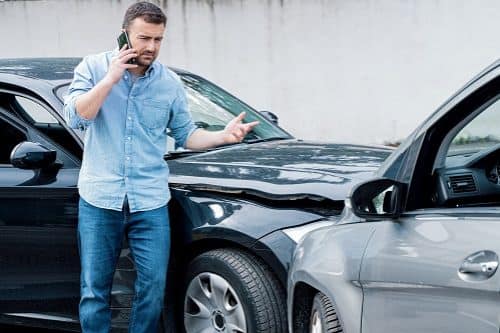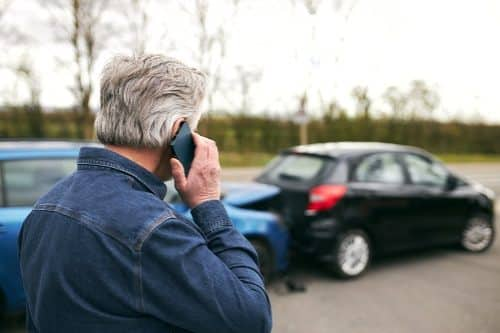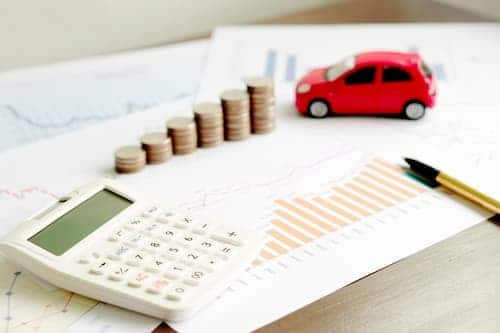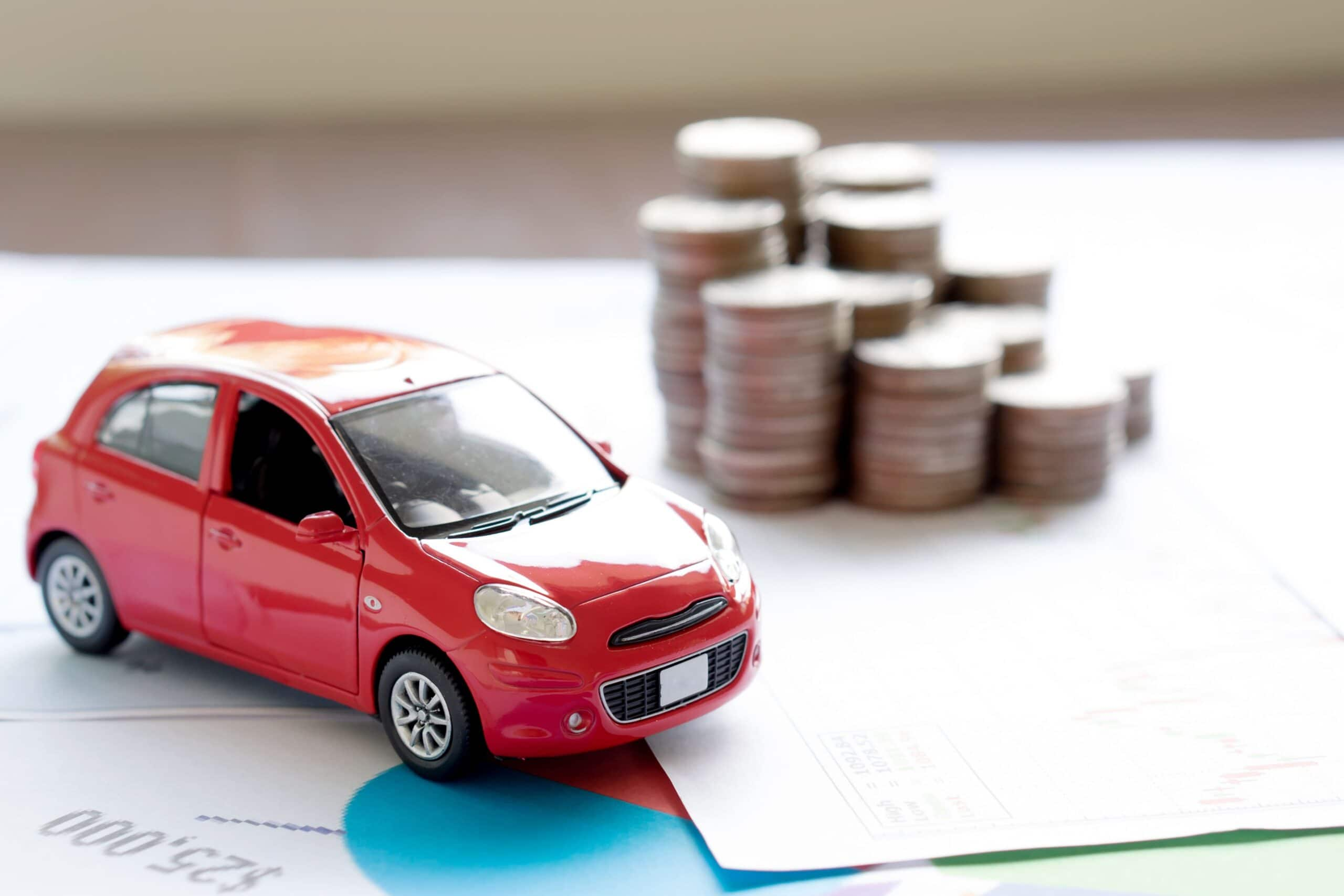What distracts drivers the most?
Drivers say texting is the biggest distracted driving issue. Nearly four in 10 drivers picked texting as the biggest distraction.
Here’s what drivers chose as the biggest driving distraction:
| Texting | 38% (an increase from 24% in the 2020 survey) |
| Navigation system | 25% |
| Kids yelling in the back / dealing with kids | 24% |
| Checking social media while driving | 20% |
| Fiddling with music | 17% |
| Talking on phone while driving while holding phone | 15% |
| Eating while driving | 13% |
| Talking on phone hands-free | 10% |
Both men and women chose texting as the biggest distraction, but they disagreed on other major distractions.

It’s not just outside tech like a cellphone that can distract drivers but people and equipment in the vehicle,” says Penny Gusner, senior consumer analyst for Insurance.com. “To keep car insurance rates down, drivers need to be accident-free, so setting yourself up for success on the road is my recommendation. Put your phone on ‘do not disturb,’ plot your destination and look at the route on the navigation system and give the kids something to do all before you put your vehicle in drive.”
Tina Willis of Tina Willis Law, an Orlando-based auto accident lawyer, says texting while driving leads to the most serious injuries and fatalities. Phone and video usage while driving are a close second, Willis said.
She’s seen an increase in distracted driving accidents in recent years and said that's connected to people looking at their phones. Drivers are checking their phones for texting, social media, blogging/video blogging, scheduling appointments and many other reasons.
As more of our lives move to our phones, there are more accidents on the roads caused by distracted driving. Anything that takes our minds or eyes off the road is dangerous,” Willis says.
Texting while driving remains an issue
Most drivers say they either never text or have only a few times ever. In fact, only 22% admit to texting while driving daily:
- 11% said they text while driving multiple times a day
- 11% said they text while driving a few times a day
Why do people text while driving? Nearly one-third said they text only when it’s urgent:
| Urgent situation, for example needed to tell family member something important | 29% |
| To tell someone when I would arrive somewhere | 21% |
| Because someone texted me and I replied | 19% |
| Needed to for work purposes | 11% |
| To send a change in plans | 9% |
| Just to say hello (or was bored and wanted something to do) | 7% |
| To send a shopping list | 4% |
Social media is another reason people may use their phone while driving. Sixty-two percent said they've never used social media or only a few times ever while driving. Twenty-four percent said they do so daily (13% multiple times a day; 11% a few times a day).
Sixty percent of respondents admitted to checking their phone in general at least once every half-hour. Men say they check their phones more than women (66% of men check their phones at least every half hour compared to 53% of women).
However, many of those same people say they don’t check the phone when they drive.
- 47% say they don’t have the urge to check their phone while driving
- 18% say they only check occasionally when they’re expecting someone to contact them
- 16% say they check their phone while driving and fine with it
- 12% say they check their phone while driving but wish they didn’t
Only 7% said their phone stops them from checking the phone while they drive, but some of those respondents admitted to disabling that feature so they can still look at their phone while driving.
Drilling down by gender, 57% of women say they don’t check their phones while driving compared to 36% of men.
Drivers know texting is dangerous, but do it anyway
The National Highway Traffic Safety Administration estimated that 3,142 people were killed in distracted driver-related accidents in 2019. That was a 10% increase over the previous year.
“When a person reads a text while driving, his or her eyes are off the road for an average of five seconds. At 55 miles per hour, that is like driving the length of a football field while blindfolded,” says the Governors Highway Safety Association.
We found that drivers know distracted driving, such as texting, is a problem.
A whopping 88% acknowledged that texting and driving is as dangerous as driving under the influence. That’s nearly identical to the response in the two previous years’ surveys.
However, many respondents admitted to texting and using the phone while driving.
How often do you use your phone (by touching the screen or holding) behind the wheel?
| Only a few times ever, if that | 43% (a decrease from 50% in the 2020 survey) |
| Daily only a few times | 18% |
| Daily multiple times | 13% |
| Occasionally, three or four times a week | 12% |
| Occasionally, three or four times a month | 9% |
| Occasionally, three or four times a year | 5% |
What are drivers doing on their phones while driving?
| Made a phone call | 49% |
| Used a navigation app | 43% |
| Used voice to text | 29% |
| Texted | 26% |
| Taken a photo (not selfie) | 14% |
| Read your email / check work emails | 12% |
| Checked social media | 11% |
| Checked news | 11% |
| Taken a video | 10% |
| Watched a video or YouTube clip | 10% |
| Taken a selfie | 9% |
| Written an email | 9% |
| Surfed the web | 7% |
| Watched live sports event | 5% |
Here are the top results by gender:

Taking selfies while driving becoming more common
Texting isn’t the only type of distracted driving. There’s also taking selfies. That issue seems to be getting worse.
Last year, 11% of respondents said they took a selfie while driving. This year, that percent increased to 35%.
Why would someone want to take a selfie while driving?
| There was a particularly majestic view | 36% |
| I wanted to photograph severe weather event on the road or scenery | 32% |
| I wanted to share a funny thought or social commentary on Facebook or social media | 27% |
| I was documenting a bizarre driving event (traffic, reckless driving) | 27% |
| I just felt like it | 26% |
| I wanted to photograph my friends, family in the car | 21% |
| Wanted to photograph an accident I wasn't involved in | 20% |
| I was documenting the behavior of law enforcement | 15% |
| I do it regularly to show others where I am or what I’m passing when driving | 14% |
Drivers confess to rude and dangerous moves behind the wheel
Besides distracted driving, our survey also asked a question about their behavior while driving.
Seventy-eight percent admitted to taking part in at least one type of rude behavior while driving, including:
| Brake-checked a car following closely | 30% |
| Honked at someone who was driving too slowly | 29% |
| Flipped someone off while driving | 27% |
| Swore in front of kids while driving | 23% |
| Sped up significantly to prevent someone from passing you | 21% |
| Tailgated someone on purpose because they were going too slow | 17% |
| Driven to the front of a merge line, then swerved over and cut in | 13% |
| Swore in front of elderly passengers (parents, in-laws, etc.) while driving | 13% |
| Flipped someone off in front of kids while driving | 13% |
| Sped up to block another car with its signal on | 11% |
| Gone when it wasn't your turn at a 4-way stop | 11% |
| Chased after a car that cut you off so you could glare at them/flip them off | 10% |
| Turned on your brights at an oncoming car just to be mean | 10% |
| Stolen a parking spot that someone else was waiting for | 9% |
| Driven in breakdown lane around traffic | 9% |
| Dinged someone's car in a parking lot and driven away | 7% |
| Keyed someone's car | 6% |
How much car insurance rates go up for distracted driving
Distracted driving doesn’t just lead to accidents. You can also get a ticket and wind up paying higher auto insurance rates.
Texting tickets increase your auto insurance costs an average of 23%. That’s $346, on average, across the U.S. It’s even higher in places like California, Ohio, Indiana, New Hampshire and Rhode Island. California’s average auto insurance rate increase is 45% for a texting ticket. The other above states increase an average of 34%, according to rates Insurance.com received from Quadrant Information Services. One at-fault accident on your record can hike your rates by about 32%, a distracted driving ticket by 22%.
States have implemented anti-texting laws. Almost all states have banned texting and talking on a cellphone while driving. The Governors Highway Safety Association said 48 states and the District of Columbia have banned texting while driving.
Thirty-eight states and the District of Columbia forbid all cell phone use by novice drivers. Twenty states and the District of Columbia prohibit cell phone use by school bus drivers, Also, 25 states and the District of Columbia ban drivers from using hand-held cell phones while driving, GSHA said.
Some states, including Washington, forbid eating and putting on makeup while driving. Even if a state doesn’t specifically ban these driving practices, you could still get a ticket for distracted or reckless driving.
Michael Lowe, CEO at Car Passionate.com, said stronger laws and fines to combat distracted driving have helped, but they haven’t stopped people from looking at their phones while driving.
If you are charged with distracted driving, you could be banned for driving or, if you caused an accident, you could be facing jail time. So this has helped reduce the number of fatalities. However, the fine increase hasn't had a huge impact on persistent lawbreakers,” Lowe said.
Despite laws against the practice, cell phone use while driving is increasing. A 2019 Insurance Institute for Highway Safety study found that Virginia drivers were 57% more likely to be using a cellphone while driving compared to a similar 2014 survey.
So, even though people are increasingly aware of the problem of distracted driving, the issue is actually getting worse.
"The bottom line is drivers that are being distracted, discourteous or outright dangerous need to recognize this behavior and change or they are likely to end up in an accident or receiving a ticket," says Gusner. "Either of those will adversely affect your car insurance rates for the next three to five years, so a long time for you to pay for your actions as a driver."





